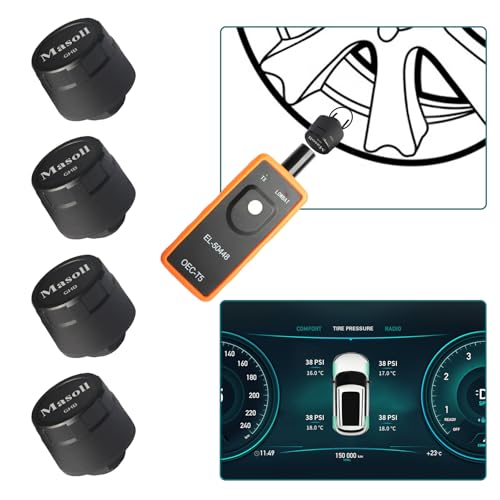We’ve all been there – cruising down the highway when suddenly that pesky TPMS warning light illuminates our dashboard. But have you ever wondered how long these tire pressure monitoring systems actually last before they need replacement?
TPMS sensors aren’t designed to last forever and understanding their lifespan can save you from unexpected breakdowns and costly repairs. Most drivers don’t realize these small but crucial components have a finite battery life that directly impacts your vehicle’s safety and performance.
Whether you’re dealing with a flickering warning light or planning ahead for maintenance we’ll explore everything you need to know about TPMS longevity. From battery life expectations to replacement costs and warning signs that indicate it’s time for new sensors – we’ve got the insights that’ll keep you informed and your tires properly monitored.
What Is TPMS and How Does It Work
TPMS stands for tire pressure monitoring system, a safety feature that monitors air pressure levels in your vehicle’s tires. Federal law requires all passenger vehicles manufactured after 2007 to include this technology as standard equipment.
Two main types of TPMS exist in today’s vehicles. Direct TPMS uses sensors mounted inside each tire to measure actual air pressure and transmit data wirelessly to your dashboard. Indirect TPMS relies on wheel speed sensors from the anti-lock braking system to detect pressure changes by monitoring tire rotation differences.
Direct systems provide precise pressure readings in PSI or bar units. Each sensor contains a battery-powered transmitter that sends radio frequency signals every 60 seconds when the vehicle moves. These sensors attach to the valve stem or tire rim depending on the vehicle manufacturer’s design.
Indirect systems calculate pressure loss by comparing wheel rotation speeds. When a tire loses pressure it rotates faster than properly inflated tires because of its smaller circumference. The system alerts drivers when it detects important speed variations between wheels.
Dashboard warning lights activate when tire pressure drops 25% below the recommended level. Most systems display a yellow exclamation point inside a tire-shaped icon. Advanced displays show individual tire pressures and temperatures in real time.
Temperature changes affect TPMS accuracy since tire pressure decreases approximately 1 PSI for every 10-degree Fahrenheit drop. Sensors account for these variations using built-in temperature compensation algorithms.
| TPMS Component | Function | Location |
|---|---|---|
| Pressure sensor | Measures tire air pressure | Inside tire or valve stem |
| Temperature sensor | Monitors tire temperature | Integrated with pressure sensor |
| Radio transmitter | Sends data to vehicle computer | Inside each sensor unit |
| Dashboard display | Shows pressure readings and alerts | Vehicle instrument cluster |
| Control module | Processes sensor data | Under dashboard or in trunk |
Battery power enables direct TPMS sensors to operate independently for several years. Lithium batteries typically provide 5 to 10 years of continuous operation before requiring sensor replacement.
Average Lifespan of TPMS Sensors
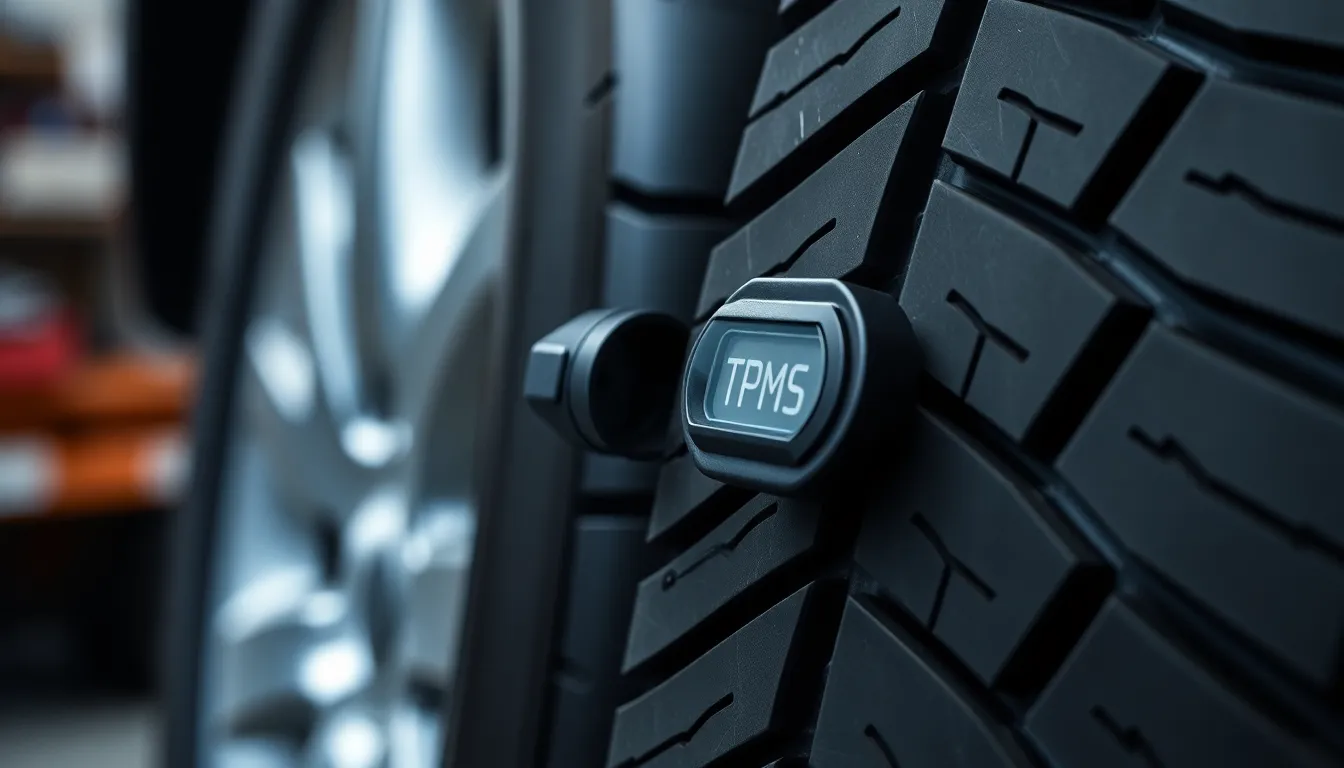
TPMS sensors generally operate between 5 to 12 years, with most systems averaging 7 years of reliable service. Battery powered components determine the operational lifespan, though external factors like driving patterns and weather conditions significantly impact performance duration.
Direct TPMS Sensor Longevity
Direct TPMS sensors function for 5 to 10 years before requiring replacement due to lithium-ion battery depletion. These sensors transmit pressure data continuously from inside each tire, consuming battery power with every radio frequency transmission. Cold weather extends battery life by reducing chemical reactions within the power cells, while warmer temperatures accelerate energy consumption. Driving frequency affects transmission rates, as sensors activate more often during regular use compared to vehicles that sit idle for extended periods. Urban driving patterns with frequent stops and starts trigger more sensor transmissions than highway driving at consistent speeds.
Indirect TPMS System Duration
Indirect TPMS systems operate without battery powered sensors, measuring tire pressure through wheel speed variations and rolling characteristics. These systems rely on existing vehicle computer networks and wheel speed sensors that typically last throughout the vehicle’s operational life with proper maintenance. Electronic components monitor revolution differences between tires to detect pressure changes, eliminating battery replacement concerns associated with direct sensor systems. Vehicle manufacturers integrate these systems into existing ABS and stability control networks, reducing separate component failure risks. Regular software updates and diagnostic checks ensure continued accuracy without the time constraints that affect battery powered direct sensors.
Factors That Affect TPMS Lifespan
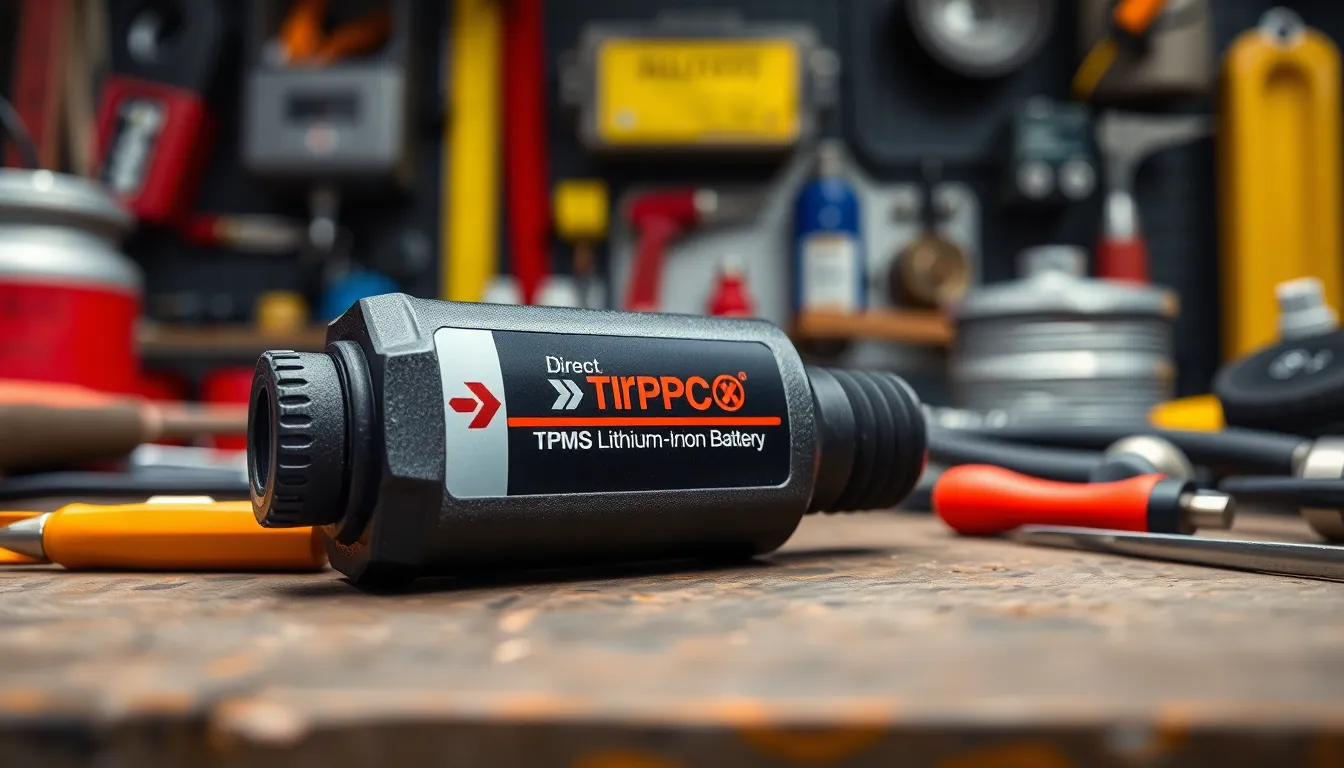
Understanding what influences TPMS sensor longevity helps us make informed decisions about maintenance and replacement timing. Several key elements determine how long these critical safety components function effectively.
Battery Life and Quality
Lithium-ion batteries power direct TPMS sensors and typically deliver 5 to 12 years of service, with most averaging around 7 years of reliable operation. High-quality batteries extend sensor lifespan significantly compared to standard components. Manufacturing standards directly impact battery performance, with premium sensors often outlasting basic alternatives by 2 to 3 years. Battery degradation occurs gradually, causing sensors to transmit weaker signals before complete failure.
Environmental Conditions
Cold climates preserve TPMS battery life by reducing chemical reactions that drain power, extending sensor operation beyond average expectations. Warm conditions accelerate battery degradation through increased chemical activity, potentially shortening sensor lifespan by 1 to 2 years. Temperature extremes create additional stress on sensor housing and electronic components. Moisture exposure from road conditions affects sensor seals and can compromise internal electronics over time.
Driving Habits and Vehicle Usage
Stop-and-start traffic increases transmission frequency as sensors communicate more often during speed changes and braking events. Highway driving at constant speeds reduces sensor activity, preserving battery power and extending operational life. Frequent short trips trigger more sensor transmissions compared to longer highway journeys. Vehicle storage periods allow sensors to enter sleep mode, conserving battery power during extended parking situations.
Signs Your TPMS Needs Replacement
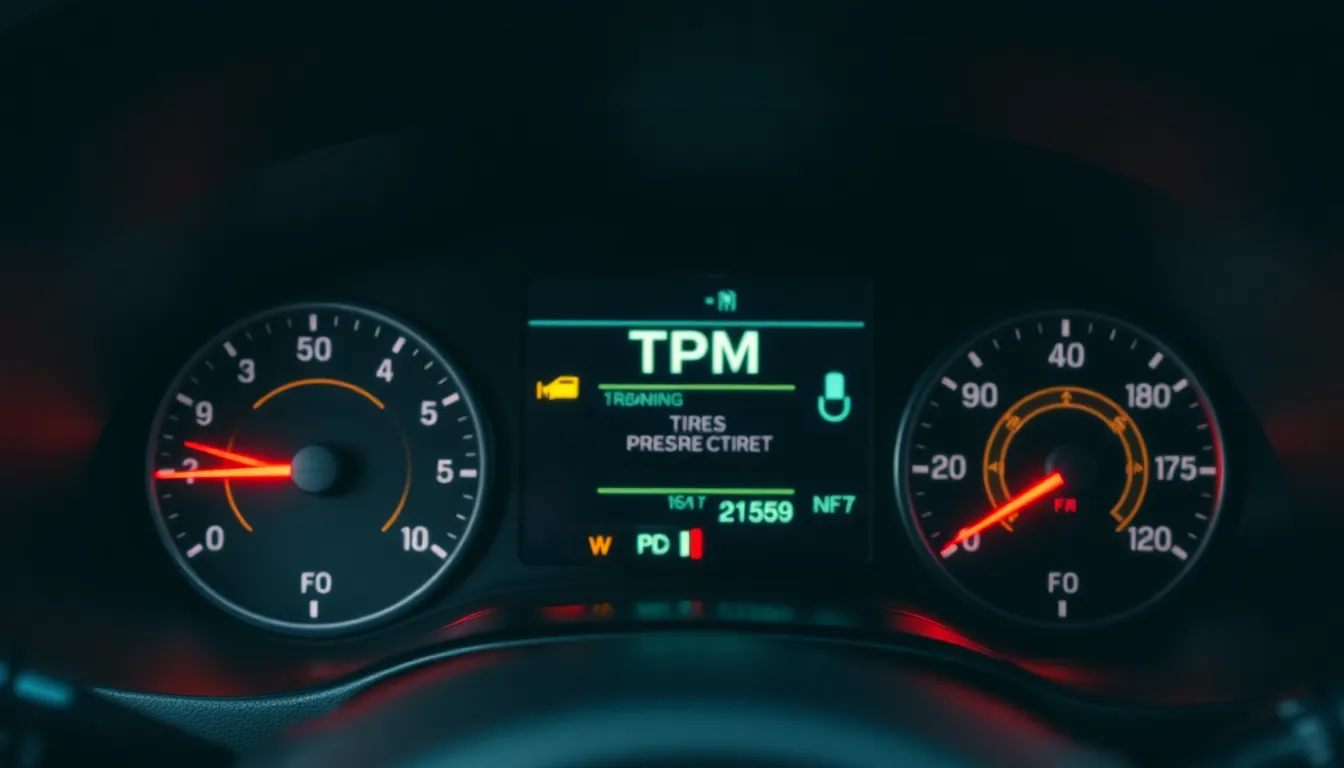
Recognizing when your TPMS sensors require replacement prevents safety issues and ensures accurate tire pressure monitoring. We’ve identified key warning signs that indicate sensor failure or battery depletion.
Warning Light Indicators
TPMS warning lights on your dashboard serve as the primary indicator of sensor issues. The light illuminates when tire pressure drops below recommended levels or when sensors malfunction.
A consistently illuminated warning light after inflating tires to correct pressure signals potential TPMS failure. This persistent warning indicates the sensor isn’t transmitting data properly to your vehicle’s computer system.
Flashing TPMS lights often point to sensor battery depletion or communication problems between sensors and the dashboard display. We recommend immediate inspection when warning lights flash continuously for more than one minute after starting your vehicle.
Temperature-related warning lights differ from actual sensor failure indicators. Cold weather naturally reduces tire pressure and triggers temporary warnings, but persistent lights in normal conditions suggest sensor replacement needs.
Inconsistent Pressure Readings
Pressure readings that don’t match manual tire gauge measurements indicate sensor calibration issues or battery failure. Direct TPMS sensors losing accuracy typically display pressure values significantly different from actual measurements.
Failed sensors often show static readings that don’t update when tire pressure changes. We observe this problem frequently in sensors approaching the 5-year mark of their operational lifespan.
Erratic pressure displays switching between different values within seconds point to internal sensor malfunction. These fluctuations occur when lithium-ion batteries begin degrading and can’t maintain consistent power output.
Missing pressure data from exact tires indicates complete sensor failure for those positions. The dashboard display shows dashes or error messages instead of numerical pressure values when sensors stop transmitting entirely.
How to Extend TPMS Sensor Life

We can significantly extend the lifespan of our TPMS sensors through proper maintenance and care practices. Following these guidelines helps maximize the 5 to 12 year lifespan typical for direct TPMS sensors.
Proper Maintenance Practices
Temperature control plays a crucial role in preserving TPMS sensor longevity. We protect our sensors by parking in covered areas away from direct sunlight and extreme cold conditions whenever possible.
Regular cleaning prevents dirt buildup that can interfere with sensor performance. Cleaning sensors during routine tire maintenance removes debris and corrosive materials that may damage the units over time.
Battery care varies depending on sensor type. Some TPMS sensors feature replaceable batteries while others come sealed from the manufacturer, so we verify the exact sensor design before attempting any battery maintenance.
Physical handling requires careful attention during tire services. We ensure technicians handle sensors gently during tire mounting and dismounting to prevent internal damage to pressure monitoring components.
Environmental protection involves monitoring exposure to harsh conditions. Extreme temperature fluctuations and road salt can accelerate sensor degradation, making protective measures essential for longevity.
Professional Inspection Schedule
Regular maintenance checks integrate TPMS inspection into routine vehicle services. We schedule sensor evaluations during tire rotations and annual vehicle inspections to catch potential issues early.
Post accident inspections verify sensor functionality after any vehicle collision. Impact damage may affect sensor calibration or physical integrity, requiring immediate professional assessment.
Seasonal preparation involves checking sensors before important temperature changes. Cold weather can affect battery performance while heat may accelerate component degradation, making preseason inspections valuable.
Replacement timing considers overall sensor condition rather than individual failures. We evaluate replacing all sensors simultaneously when units approach the 7 year average lifespan, as this approach often proves more cost effective than individual replacements.
Compatibility verification ensures replacement sensors match our vehicle’s TPMS system specifications. Professional installation confirms proper integration with existing vehicle computer networks and dashboard warning systems.
TPMS Replacement Costs and Options

Replacement costs for TPMS sensors range between $50 to $100 per sensor depending on vehicle type and sensor quality. Professional installation adds labor charges typically ranging from $25 to $50 per sensor to the total expense.
Multiple factors influence the final cost of TPMS sensor replacement:
- Vehicle compatibility determines sensor specifications and pricing tiers
- Sensor quality affects longevity with premium options costing more upfront
- Installation complexity varies based on wheel design and accessibility
- Geographic location impacts labor rates at service centers
We recommend considering these replacement strategies when sensors reach their 5 to 12 year lifespan:
Individual Sensor Replacement
Replacing only failed sensors costs less initially and works well when other sensors remain functional. This approach suits drivers whose sensors fail at different intervals due to varying usage patterns.
Complete Set Replacement
Installing all four sensors simultaneously ensures uniform performance and prevents staggered replacement schedules. This option provides long term cost savings when multiple sensors approach their 7 year average lifespan.
DIY Installation Options
Self installation reduces labor costs for mechanically inclined drivers with proper tools. Programming new sensors to the vehicle’s system requires TPMS reset procedures exact to each manufacturer.
Professional Service Benefits
Certified technicians guarantee proper installation and system programming while providing warranty coverage. Professional service includes sensor testing and system calibration to ensure accurate pressure readings.
Budget conscious drivers can explore aftermarket sensors costing 30 to 50% less than original equipment while maintaining functionality. Universal sensors offer compatibility across multiple vehicle brands though programming requirements vary by manufacturer specifications.
When to Replace vs Repair TPMS
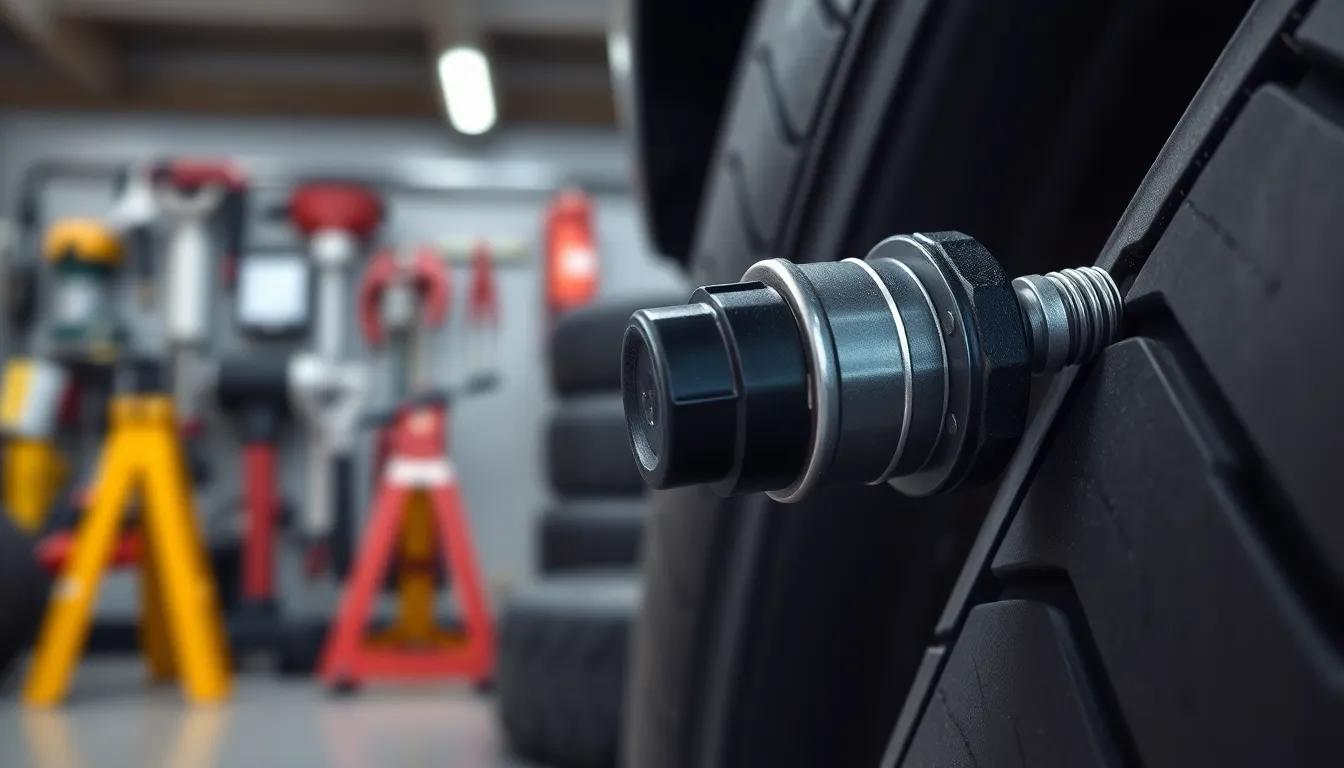
Replacement typically represents the only viable option for TPMS sensors due to their integrated design and sealed construction. Most automotive professionals replace these sensors rather than attempting repairs because the internal components cannot be accessed or serviced individually.
Battery failure triggers automatic replacement since lithium-ion batteries in TPMS sensors are permanently sealed within the unit. We cannot replace these batteries separately, making sensor replacement necessary once the 5 to 10 year battery life expires.
Physical damage requires immediate replacement when sensors suffer impact from potholes, accidents, or severe tire damage. Cracked housings or damaged antennas compromise the sensor’s ability to transmit accurate pressure data to the vehicle’s monitoring system.
Communication failures indicate complete sensor replacement when units stop transmitting data to the dashboard display. These transmission issues typically result from internal electronic component failure rather than repairable external problems.
| Replacement Trigger | Repair Viability | Action Required |
|---|---|---|
| Battery depletion | Not possible | Full sensor replacement |
| Physical damage | Not available | New sensor installation |
| Transmission failure | Cannot repair | Complete unit replacement |
| Water damage | Not repairable | Sensor replacement needed |
Cost considerations favor replacement over repair attempts since TPMS sensors range from $50 to $100 per unit including installation. Attempting repairs often costs more than replacement while providing no guarantee of long-term functionality.
Professional technicians recommend replacing sensors on an “as needed” basis when individual units fail rather than waiting for complete system failure. This approach maintains continuous tire pressure monitoring while spreading replacement costs over time.
Emergency situations may require temporary sensor bypass until replacement, but we strongly advise against extended operation without functional TPMS sensors. Federal safety regulations mandate these systems for good reason, and operating without them compromises vehicle safety and may void insurance coverage.
Conclusion
Understanding TPMS lifespan helps us make informed decisions about vehicle maintenance and safety. With direct sensors lasting 5-12 years and indirect systems potentially lasting the vehicle’s lifetime we can plan replacements effectively.
We recommend monitoring warning signs closely and addressing issues promptly to maintain optimal tire pressure monitoring. Whether you choose individual sensor replacement or complete system updates the investment in functional TPMS protects both safety and wallet.
Remember that proper maintenance extends sensor life while regular inspections catch problems early. By staying proactive with TPMS care we ensure reliable performance and avoid unexpected roadside emergencies.
Frequently Asked Questions
How long do TPMS sensors typically last?
TPMS sensors generally last between 5 to 12 years, with most averaging around 7 years. Direct TPMS sensors with battery-powered components typically function for 5 to 10 years before requiring replacement due to battery depletion. Indirect TPMS systems don’t rely on batteries and can last throughout the vehicle’s operational life with proper maintenance.
What factors affect TPMS sensor lifespan?
Several factors influence TPMS sensor longevity including battery quality, environmental conditions, and driving habits. Cold climates preserve battery life while warm conditions accelerate degradation. Stop-and-start traffic uses more battery power than highway driving. High-quality lithium-ion batteries can extend sensor lifespan significantly compared to standard batteries.
What are the warning signs that TPMS sensors need replacement?
Key warning signs include consistently illuminated dashboard TPMS lights after correcting tire pressure, flashing warning lights indicating battery depletion, inconsistent pressure readings compared to manual gauges, static or erratic pressure displays, and missing pressure data for specific tires. These symptoms often indicate sensor failure or communication problems.
How much does it cost to replace TPMS sensors?
TPMS sensor replacement costs range from $50 to $100 per sensor, plus additional labor charges for professional installation. Factors affecting cost include vehicle compatibility, sensor quality, installation complexity, and geographic location. You can replace individual failed sensors or all four simultaneously for uniform performance.
Can TPMS sensors be repaired instead of replaced?
No, TPMS sensors typically cannot be repaired due to their integrated design and sealed construction. Battery failure, physical damage, or communication failure all require complete sensor replacement. The lithium-ion batteries are permanently sealed within the unit, making repair attempts impractical and often more expensive than replacement.
How can I extend the lifespan of my TPMS sensors?
To maximize TPMS sensor lifespan, maintain proper temperature control, conduct regular cleaning, handle carefully during tire services, and integrate TPMS inspections into routine vehicle maintenance. Perform post-accident inspections, prepare for seasonal temperature changes, and ensure compatibility when replacing sensors to maintain optimal performance throughout their 5-12 year lifespan.


